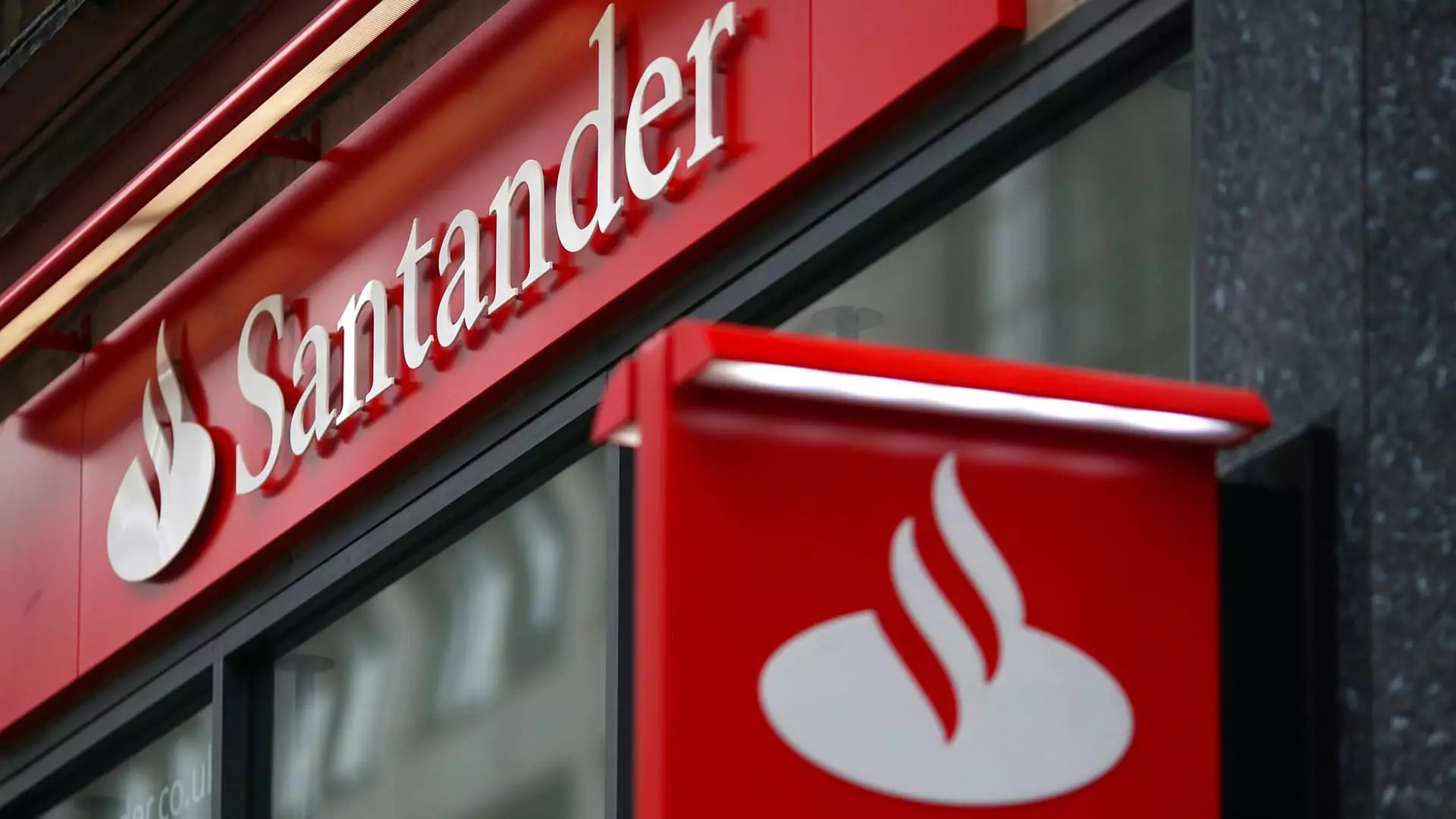Santander’s recent announcement to acquire TSB for £2.65 billion signals more than just a strategic expansion; it reveals a desperate attempt to reassert its dominance amid mounting challenges. For years, the British arm of a global banking giant has been mired in worries about profitability and relevance. By swooping in with an all-cash deal, Santander seemingly aims to send a message that it remains committed to the U.K., despite troubling signs of weakening performance. This move poses a stark question: is Santander genuinely betting on the long-term viability of its British operations, or is it merely trying to stave off decline through aggressive consolidation?
The sobering truth is that the profitability of Santander in the U.K. has taken a significant hit. The 38% annual plunge in pre-tax profit last year underscores deeper issues—faltering market share, increasing competition, and the erosion of high-margin mortgage business. Acquiring TSB ostensibly offers a quick fix, but it’s also a gamble that may not pay off. With projections indicating an improved return on tangible equity—rising from 11% to 16% by 2028—the move appears to be more about projecting confidence than ensuring sustainability. It’s a high-stakes game, where Santander invests heavily in assets that may or may not yield the promised strategic benefits, revealing a potentially superficial front of resilience.
National Identity and Political Turmoil: The Hidden Costs
The purchase of TSB does not occur in a vacuum—especially in a politically sensitive environment like Spain. Sabadell’s engagement in the insidious tug-of-war between Spanish national interests and regional autonomy complicates the scenario further. The Spanish government’s opposition, rooted largely in fears over job losses and regional stability, underscores how deeply intertwined banking deals are with national identity and political agendas. Madrid’s concern about maintaining stability in Catalonia, a region with a history of secessionist tensions, fuels mistrust towards foreign acquisitions and corporate mergers perceived as threats to domestic employment.
Moreover, the European Commission’s cautious stance—urging for seamless, unimpeded mergers—highlights the balancing act regulators face. They must promote competition without escalating regional tensions or undermining local employment. Santander’s acquisition thus becomes more than a financial transaction; it becomes a political symbol, entangling economic strategies with national sovereignty and regional stability. This complex political landscape hints that Santander’s gamble might yet backfire if public sentiment or regulatory pushback intensifies, further complicating its already fragile foothold in Britain.
Strategic Retaliation or Tactical Diversion?
In the broader context of the fierce competition among Spanish banks—particularly the looming threat of BBVA’s hostile takeover of Sabadell—the TSB acquisition could be a calculated move to manipulate shareholder perceptions. RBC analysts suggest that Santander’s bid is likely an effort to deter Sabadell’s shareholders from endorsing a merger with BBVA. By absorbing TSB, Santander not only expands its footprint but potentially influences the delicate power dynamics in Spain’s banking sector.
However, this move might also be an overreach that distracts from internal vulnerabilities. Santander has long relied on diversification and international presence, but its core markets are under siege from economic downturns, low interest rates, and an increasingly hostile regulatory environment. The aggressive pursuit of acquisitions, while seemingly a show of strength, could expose the bank to greater risks if the anticipated returns fall short or if political resistance tightens further.
Furthermore, the firm’s internal narrative supporters might view this as a bold, necessary step to stay competitive. Yet, it raises questions about whether Santander understands its limits. Are these acquisitions merely a desperate scramble to maintain relevance, or a testament to strategic foresight? Judging by the recent profitability issues, the answer leans heavily toward the former. Banks should be careful not to mistake aggressive expansion for real resilience—what appears to be a strategic masterstroke may ultimately reveal itself as overconfidence based on shaky foundations.
The Climate of Turmoil: Will This be a Turning Point?
Ultimately, Santander’s foray into this high-stakes acquisition underscores a broader truth about the banking industry today: volatility reigns supreme. In the midst of economic uncertainty, geopolitical strife, and regulatory hurdles, banks are faced with painful choices—pursue growth at all costs or retreat to core competencies. Santander’s latest move exemplifies a bullish, perhaps reckless, desire to project strength in turbulent times.
If this gamble succeeds, it could bolster Santander’s position, calming investor fears and adding a robust asset to its portfolio. Yet, history suggests caution—overextension during turbulent times often yields unintended consequences, from regulatory crackdowns to financial underperformance. This deal signals that Santander is prepared to risk stability for the illusion of dominance, an attitude that could cost the bank dearly if the economic winds turn against it.
In the end, Santander’s bold step might be less a calculated leap into the future and more an act of desperation cloaked in confidence. Its fate hinges on whether this audacious acquisition will serve as a genuine stepping stone toward sustained growth or a costly distraction from deeper, more systemic issues haunting the bank’s strategic vision.


Leave a Reply